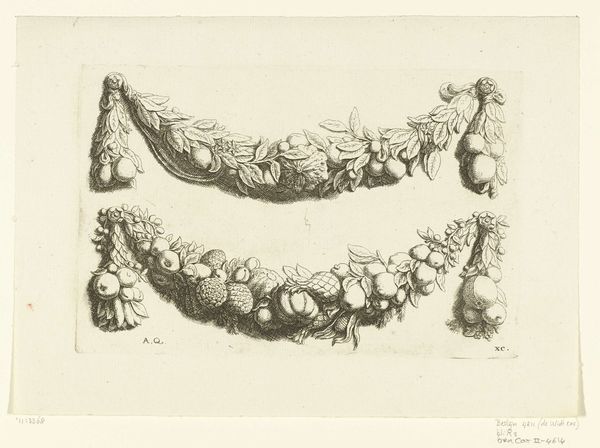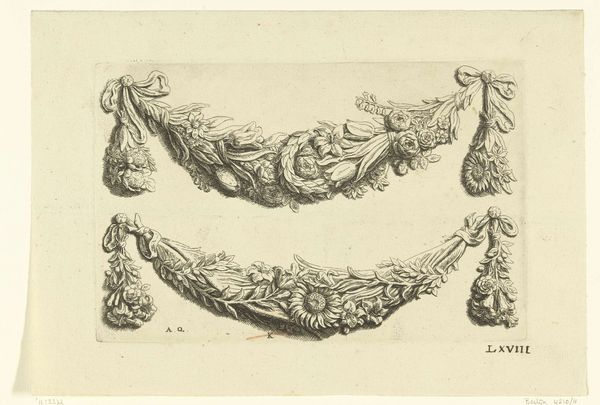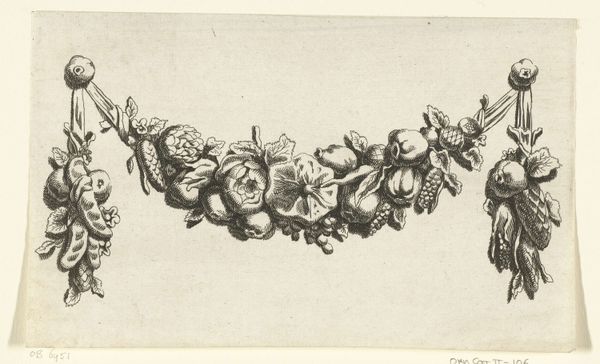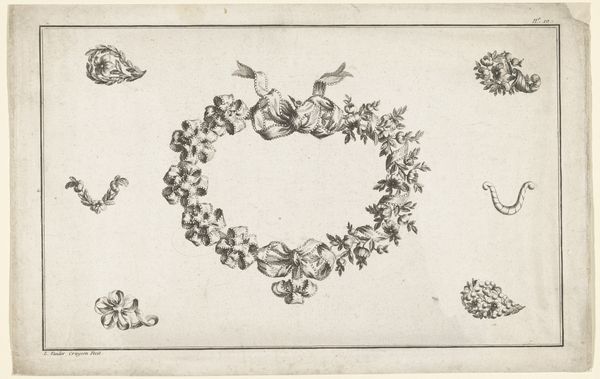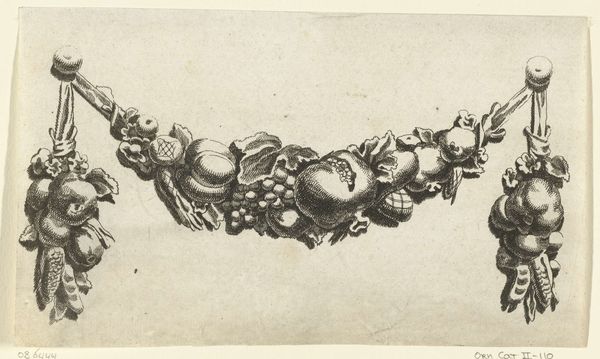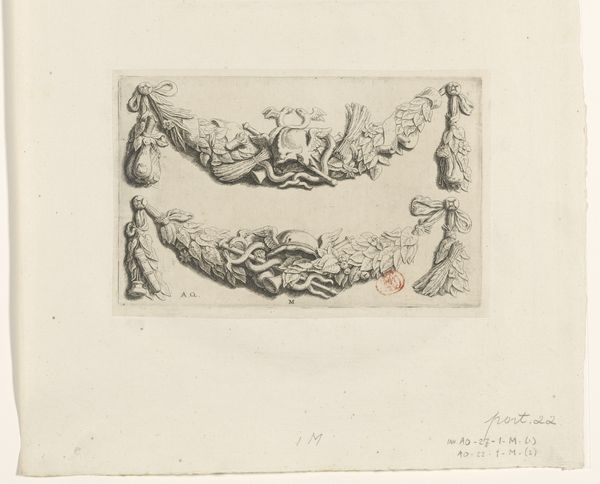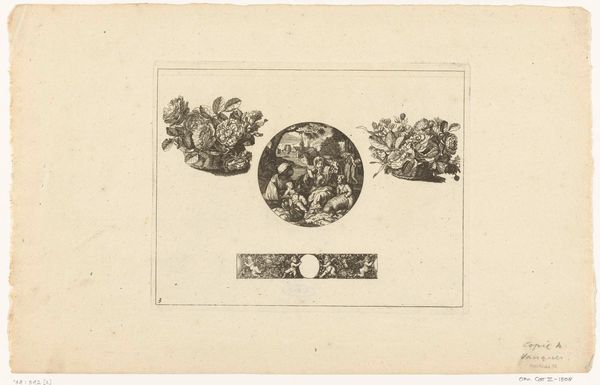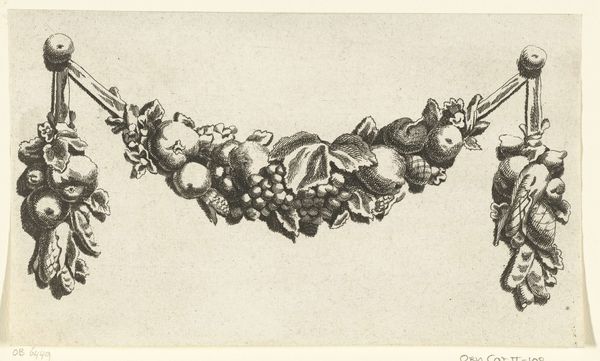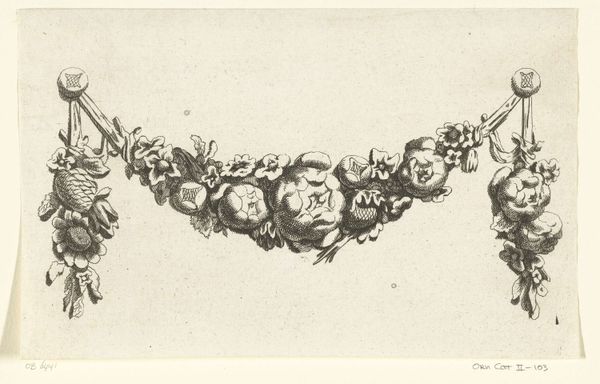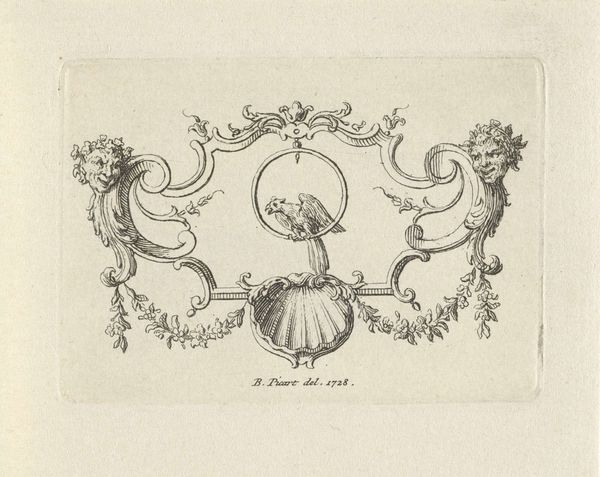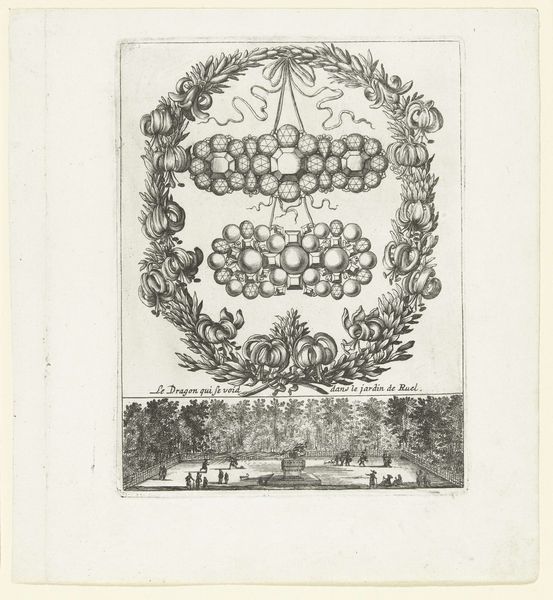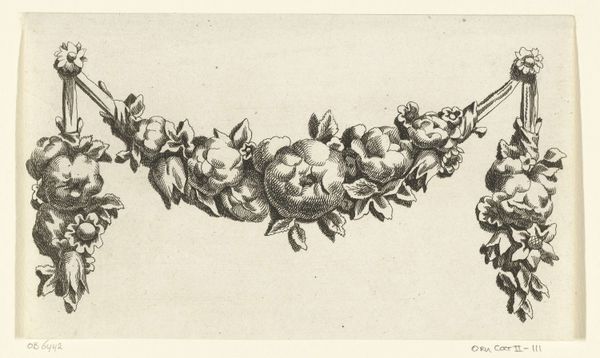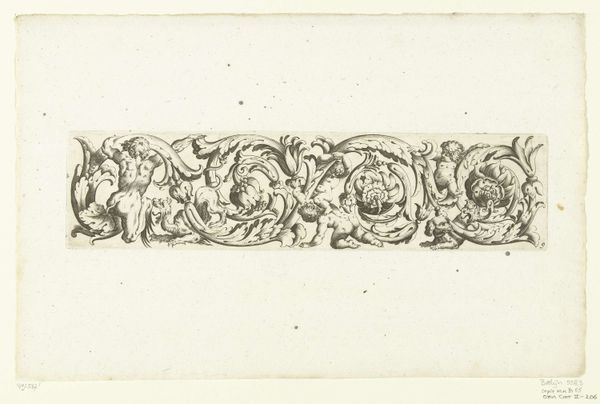
print, engraving
#
baroque
# print
#
engraving
Dimensions: height 156 mm, width 250 mm
Copyright: Rijks Museum: Open Domain
Editor: Here we have Hubert Quellinus's "Two festoons of leaves and fruit", an engraving dating back to 1665. The meticulous detail really strikes me. It’s monochrome of course, being a print, but even without colour, it feels quite rich and full. How would you interpret this work through a formal lens? Curator: The visual interest is immediately drawn to the interplay of line and form. Note how Quellinus uses hatching and cross-hatching to define volume and texture in the depicted foliage and fruit. The composition itself is rigidly structured, presenting these two festoons as near-identical mirrored images, but within that structure there's a wild asymmetry in the rendering of individual details. Do you observe how the lines create an illusion of depth, even though it's a flat medium? Editor: Yes, it's amazing how much dimension he gets from shading alone. I also see that there is very little variation in the weights of the lines, as though all objects in the prints command the same focus. Does that effect the viewing? Curator: Precisely. That flattening effect emphasizes the surface qualities of the print itself. Quellinus is not just representing festoons, he is showcasing the very act of engraving – the controlled application of line to create form. Consider the subtle variations in line thickness and density: these create a kind of visual rhythm, guiding the eye across the composition. The repetition of forms creates a visually harmonious rhythm, reinforcing the ornamental aspect. Editor: So, it's less about what the fruit represents, and more about how it's represented? Curator: Essentially, yes. The engraving technique becomes the message itself. Editor: That's a completely different way of seeing it! It sounds so obvious, but I didn't make the connection until now. Thanks for shedding new light on this piece. Curator: It is rewarding to note these structures. Reflecting on them can alter how we experience the artist and art, as a whole.
Comments
No comments
Be the first to comment and join the conversation on the ultimate creative platform.
